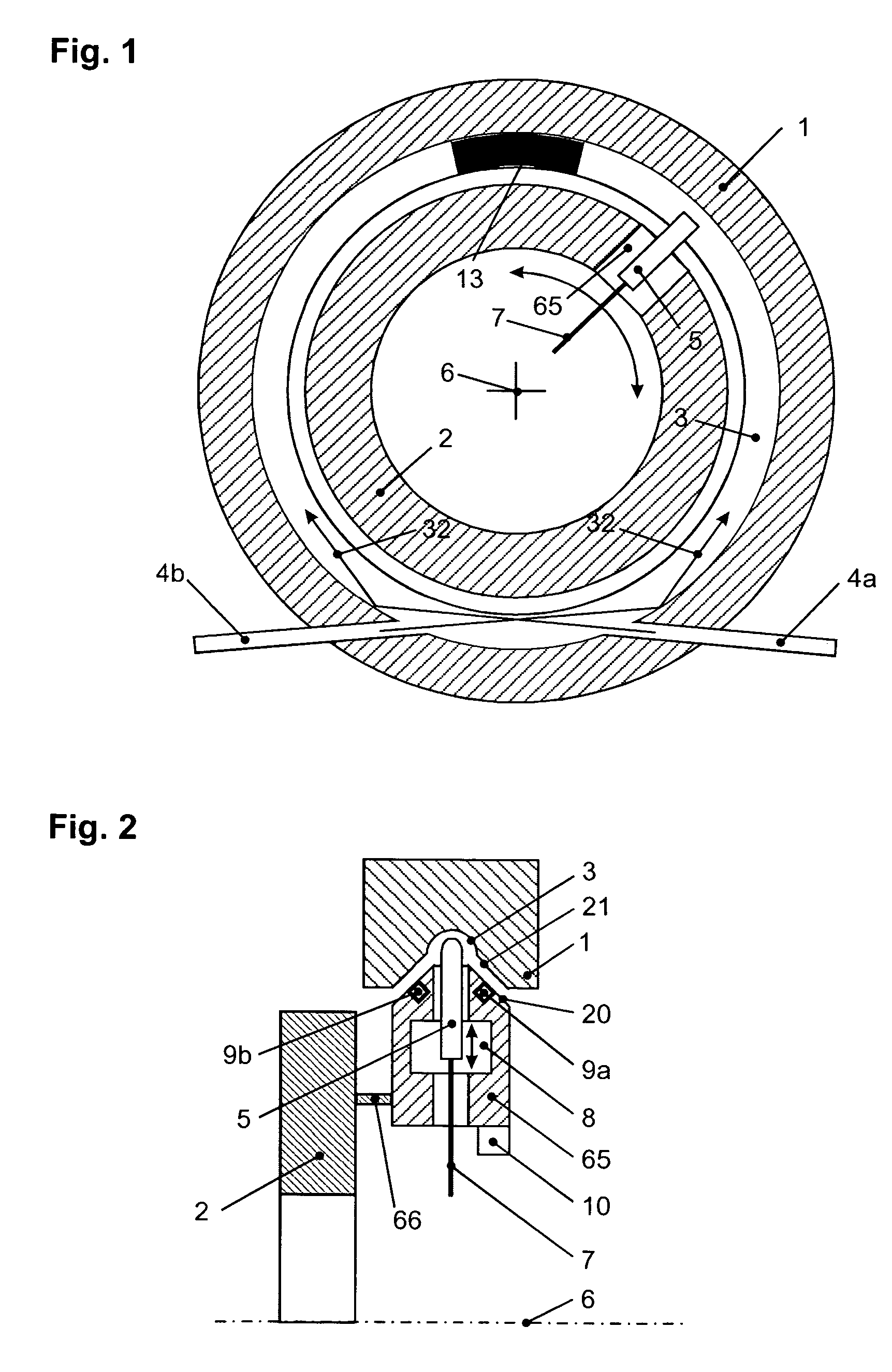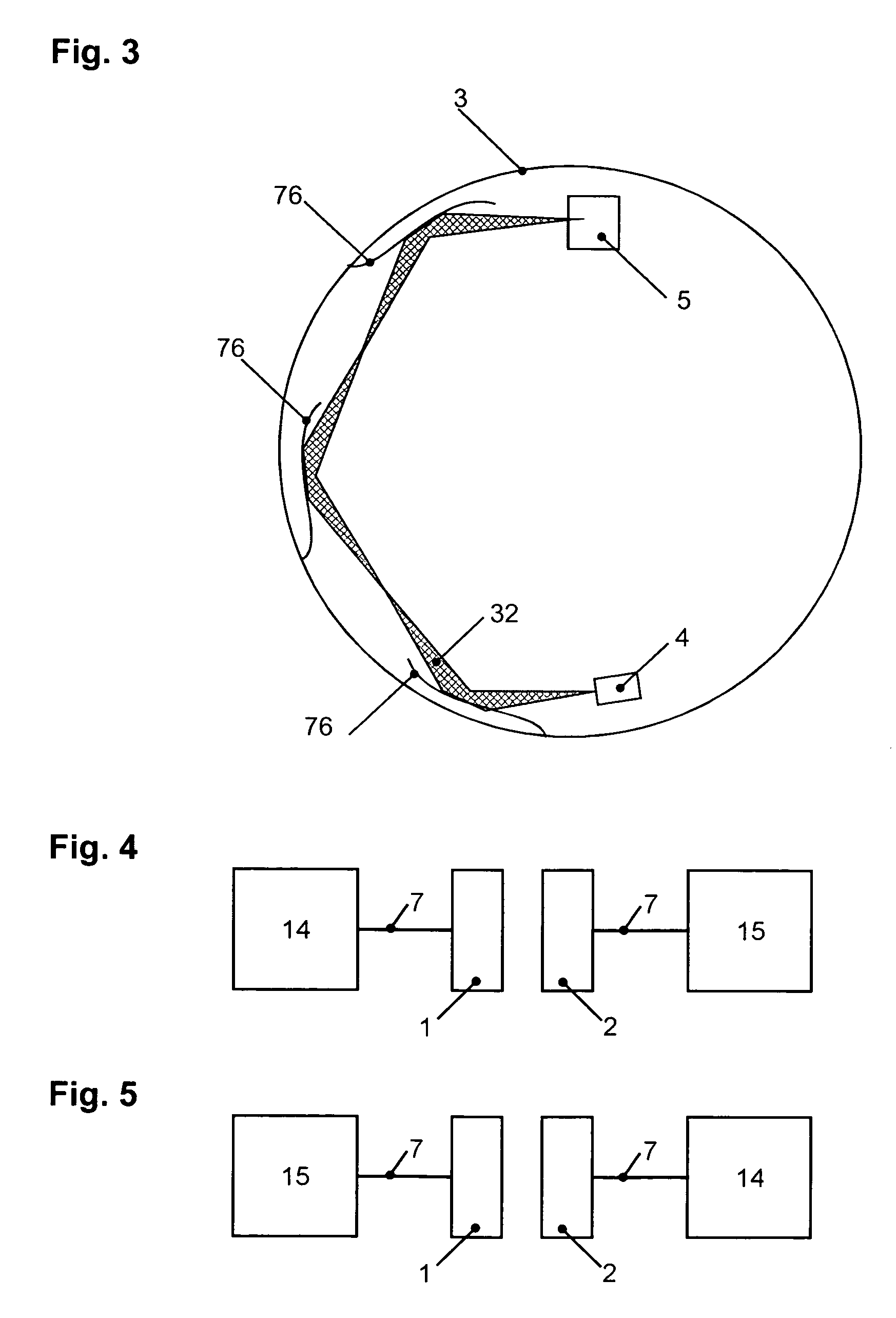Optical rotating data transmission device with coupling slide
a technology of optical rotating data transmission and coupling slide, which is applied in the direction of optical elements, mechanical devices, instruments, etc., can solve the problems of large mechanical speed of movement of the device, so as to achieve reliable transmission, reduce manufacturing costs, and reduce manufacturing costs
- Summary
- Abstract
- Description
- Claims
- Application Information
AI Technical Summary
Benefits of technology
Problems solved by technology
Method used
Image
Examples
Embodiment Construction
[0042]The device in accordance with the invention comprises a light guide that is disposed along a given track, preferably a circular track, on a first unit. For the sake of simplicity, only one light guide will be described here. Of course, a plurality of arrangements in accordance with the invention, each having one light guide, may be connected in parallel. Connected to the light guide is at least one first light coupler for coupling light into or out of the light guide. At least one optical transmitter or receiver is connected to at least one of these first light couplers. Whether a transmitter or receiver is to be connected to the light guide is determined by the desired direction of transmission. If light is to be transmitted away from the light guide, then a transmitter must be provided, and a receiver in the other case. Of course, for transmitting information, the optical transmitters are adapted to be modulated with a modulation signal.
[0043]Furthermore, a second unit is pr...
PUM
 Login to View More
Login to View More Abstract
Description
Claims
Application Information
 Login to View More
Login to View More - R&D
- Intellectual Property
- Life Sciences
- Materials
- Tech Scout
- Unparalleled Data Quality
- Higher Quality Content
- 60% Fewer Hallucinations
Browse by: Latest US Patents, China's latest patents, Technical Efficacy Thesaurus, Application Domain, Technology Topic, Popular Technical Reports.
© 2025 PatSnap. All rights reserved.Legal|Privacy policy|Modern Slavery Act Transparency Statement|Sitemap|About US| Contact US: help@patsnap.com



